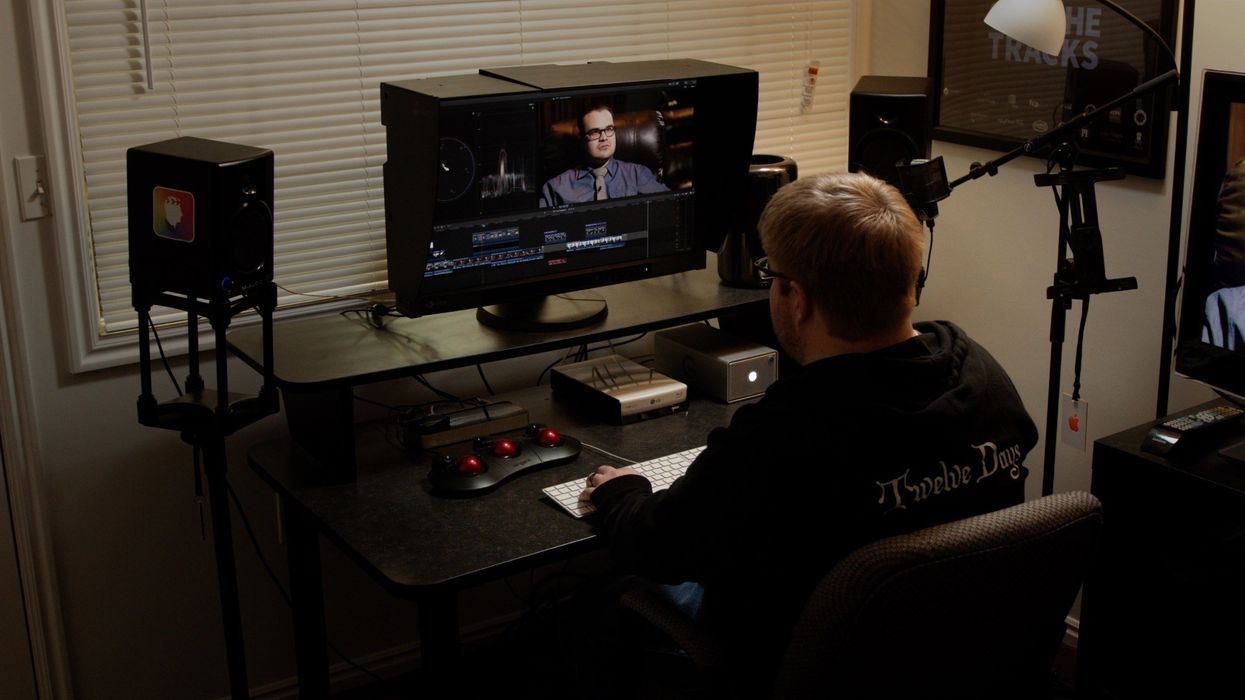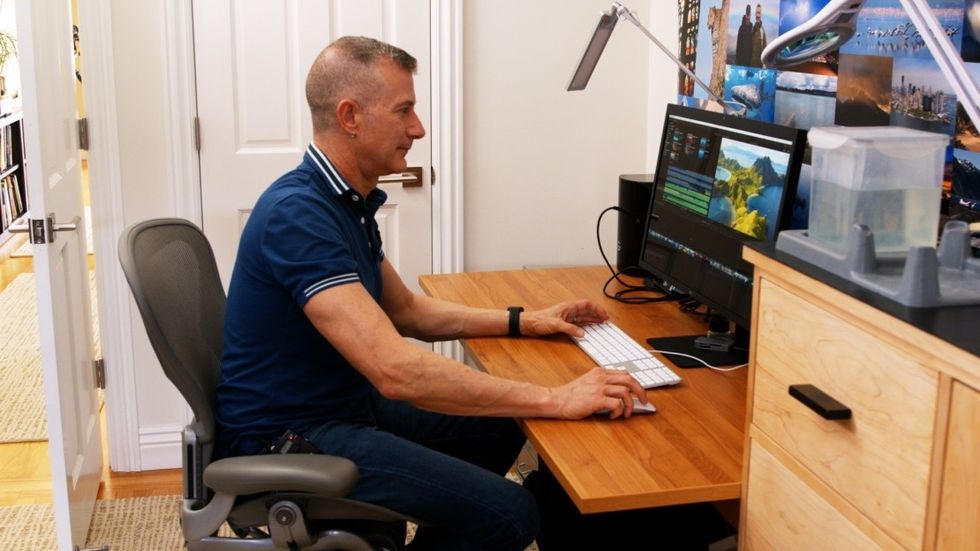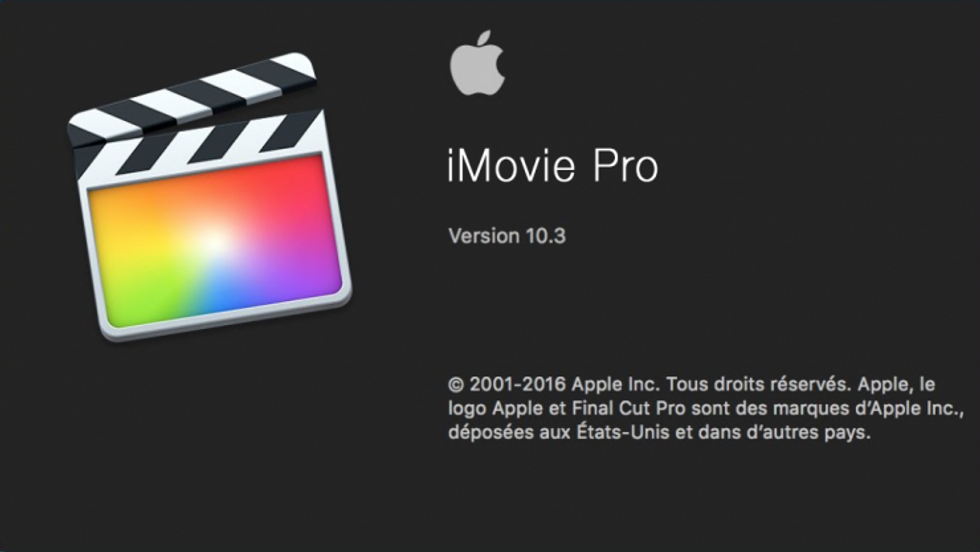'Off The Tracks' Director Bradley Olsen Shares 3 Little Known Facts About FCPX
Bradley Olsen is such a fan of FCPX that he made an entire documentary about it.

Bradley Olsen is a filmmaker, editor, post-production whiz (Fedora Pictures) and director of Off The Tracks—the much-anticipated feature documentary about Final Cut Pro X. The film "aims to clear the air once and for all" about FCPX by interviewing several of the software's developers and users about the intention behind the creation and release of the non-linear editing system.
I interviewed Olsen himself in advance of the film's release for my new podcast FCPX Marks the Spot. Our interview lasts over an hour and covers everything from the history of Final Cut Pro, its development into X, and the initial backlash against the NLE all the way up to its more recent resurgence as a legitimate, professional option. Throughout our conversation, I was wonderfully surprised to learn a number of things about the notorious NLE I had never known. Check out the entire interview below or scroll down for a recap of the most fascinating segments.
"Randy Ubillos got a call from Steve Jobs about [FCPX] that culminated in Steve Jobs asking Randy, 'Do you believe in this?' and Randy saying, 'Yes' and Steve Jobs saying, 'Then I do too.'"
1. iMovie was designed as a companion app to FCP 7
That's right, folks. As much as people like to poke fun at FCPX as a sort of "iMovie Pro", the histories of the two programs are more entwined than you could have imagined. As Olsen explains:
I know there's a lot of iMovie pro memes and all that bashing, but the interesting thing about that version of iMovie was Randy [Randy Ubillos: Chief Architect behind FCP7, FCPX, iMovie & Adobe Premiere] had created that as a program called 'Rough Cut' that was supposed to be a pre-editor for Final Cut [7] where you would organize and start your edit and transfer it over. Steve Jobs saw it and he made it iMovie. So there were ideas in that that were more advanced; like skimming and the beginnings of the magnetic timeline and the filmstrip view and things like that—were actually more advanced than what Final Cut 7 could do even though it was a rudimentary, simple program. And I said, 'They need to make a pro version of this'. So when everybody was up in arms, and 'iMovie Pro this and that', I was like 'But guys, this is the future. This is exactly what they need to do!' And I guess it was just too soon for people.
2. Steve Jobs Saved FCPX
Not only did Steve Jobs recognize the incredible work that Randy Ubillos and the design team at Apple were doing with 'Rough Cut' enough to make it its own stand-alone application but Jobs also had enough faith in Ubillos and the innovative, forward-thinking direction that FCPX was heading in to keep the dream alive.
Final Cut Pro X notoriously had a disastrous release, with a lot of folks jumping ship for Premiere rather than re-learn this seemingly foreign new program. In addition, the fact that you couldn't migrate your FCP7 projects over created such a public backlash that the entire effort could have been derailed if not for a fortuitous phone call. As Olsen tells it, "Years later we found out that Randy Ubillos actually got a call from Steve Jobs about it and that call culminated in Steve Jobs asking Randy, 'Do you believe in this?' and Randy saying, 'Yes' and Steve Jobs saying, 'Then I do too.' And for me, that moment is just so crucial."

3. Final Cut Pro 8?
With Avid, Premiere, Resolve, FCPX (and even Vegas), you have your pick of the litter when it comes to what NLE you want to cut your project in. Perhaps not surprisingly, Olsen edits almost exclusively in FCPX these days—though he does admit to having Davinci Resolve ready and available as a "swiss-army knife" of sorts. We all have our favorite NLE and sometimes people can get a little sensitive and territorial with them but Olsen had some interesting insight into what could have been had X not happened:
Avid doesn't make that much money from Media Composer—I don't know if that's a secret or not. They make money from support but they've been on a life-line for a long time. And in fact I think if it wasn't for Final Cut 10 coming out in 2011—if Final Cut 8 had come out with 64-bit support and was more like what we know Premiere to be—I think it's very likely that Hollywood would have switched over to that. Final Cut was making enough in-roads, but Apple decided to do this left turn and left everybody kinda in the dust and they looked back at Avid, 'You're still here, you're faithful. Yeah, I was about to break up with you but you're faithful and there's this (other) thing I can't trust.' So that's what it comes down to, but change is an inevitable thing and I think that we need to be open to it because that's the empowering thing about it, it allows us to be creative and inspired and have more fun. Like I said... Final Cut 10 is fun!
If you'd like to see for yourself, FCPX is offered as a 30 day free-trial over at the App Store.
'Off The Tracks' will be available on VHX.TV on July 24, 2018. Use the code OTTNFS for $1 off the movie or $5 off the bonus feature edition through VHX.tv.
The FCPX Marks The Spot PODCAST can be found on iTunes. Featured image of Bradley Olsen from 'Off the Tracks.'
Source: FCPX Marks The Spot Podcast












